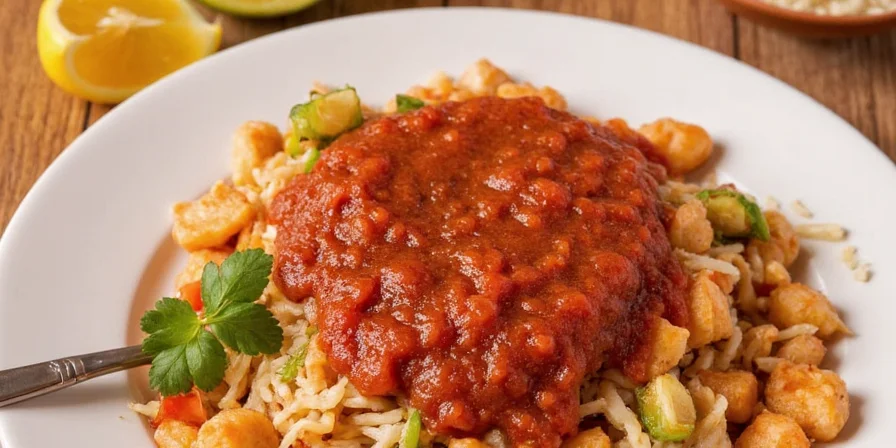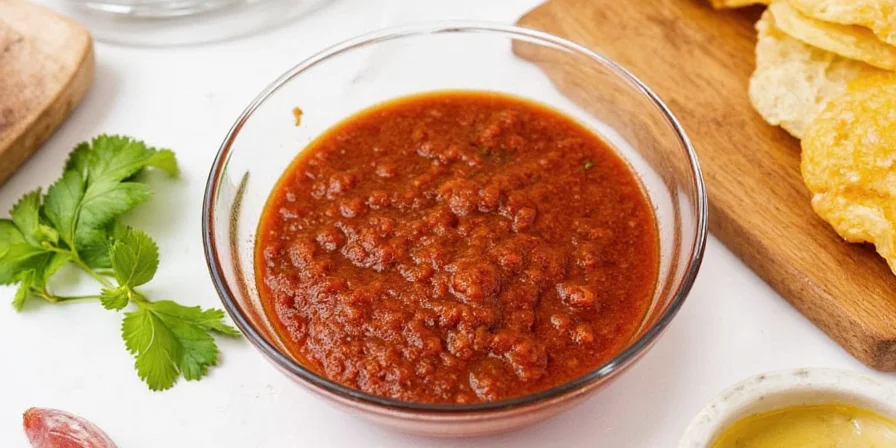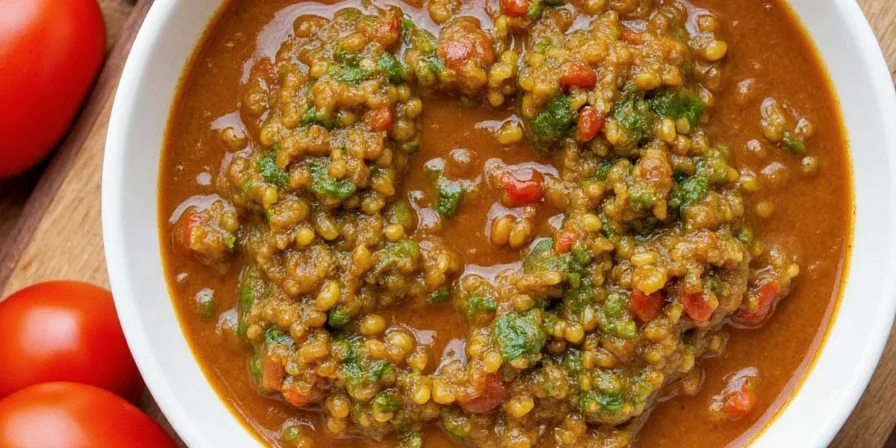Sofrito is a flavor base used across Latin American, Caribbean, and Mediterranean cuisines that transforms simple dishes into restaurant-quality meals. Unlike basic chopped vegetables, sofrito combines onions, garlic, peppers, tomatoes, and herbs cooked slowly to create complex flavors through scientific processes like Maillard reactions and enzymatic transformations.

Your Complete Sofrito Guide: What It Is and Why Every Home Cook Needs It
At its core, sofrito solves a common cooking problem: how to add deep, complex flavor to dishes efficiently. While many home cooks use raw aromatics, properly prepared sofrito creates stable flavor compounds that survive cooking cycles and penetrate ingredients more effectively.
Here's what makes sofrito different from similar bases:
- Flavor longevity: Cooked sofrito maintains flavor through cooking, while raw aromatics lose potency
- Better ingredient penetration: Fat-soluble compounds in sofrito absorb into dishes more completely
- Time efficiency: One batch enhances multiple meals (freeze for up to 5 months)
Sofrito vs Mirepoix vs Soffritto: Clear Differences Explained
Understanding these aromatic bases prevents recipe mistakes. This comparison shows exactly when to use each:
| Sofrito | Soffritto | Mirepoix |
|---|---|---|
| Onion, garlic, peppers, tomatoes, herbs | Onion, carrot, celery, olive oil | Onion, celery, carrot (2:1:1 ratio) |
| Iberian/Latin dishes (rice, stews, beans) | Italian sauces and soups | French stocks and braises |

Simple Authentic Sofrito Recipe (Ready in 25 Minutes)
This beginner-friendly recipe makes enough for 6 meals. Skip complicated scientific processes - this method works reliably every time:
- 2 large yellow onions, finely chopped
- 6 garlic cloves, minced
- 2 bell peppers (any color), seeds removed
- 1 cup fresh cilantro or culantro leaves
- 3 tbsp tomato paste
- ½ cup olive oil
- 1 tsp salt
- Heat olive oil in large skillet over medium heat
- Add onions and cook 5-7 minutes until soft
- Add garlic and cook 1-2 minutes until fragrant
- Add bell peppers and cook 5 minutes
- Stir in herbs, tomato paste, and salt
- Cook 5 more minutes, stirring occasionally
- Cool completely before storing or freezing

Regional Sofrito Variations Made Simple
Adapt sofrito to match specific cuisines with these authentic tweaks:
| Cuisine | Special Ingredients | Best For |
|---|---|---|
| Puerto Rican | Recao (culantro), ají dulce peppers | Arroz con pollo, beans |
| Cuban | Cumin, green bell peppers | Ropa vieja, black beans |
| Spanish | Ñora peppers, extra tomato | Paella, seafood dishes |
| Canary Islands | Gofio (toasted cornmeal) | Fish stews, vegetable dishes |

When and How to Use Sofrito in Your Cooking
Maximize flavor impact by using sofrito at these critical points:
- Rice dishes: Add ½ cup sofrito when you add rice and liquid
- Bean recipes: Stir in during last 30 minutes of cooking
- Marinades: Mix with proteins 2+ hours before cooking
- Soups and stews: Use as first ingredient after heating oil
- Veggie dishes: Sauté vegetables in sofrito before adding other ingredients
Pro Tips for Better Results
- Freeze in ice cube trays for single-serving portions
- Add a splash of water if sofrito sticks during cooking
- For deeper flavor, cook onions slowly over low heat
- Fresh cilantro works if culantro isn't available
- Use within 5 days refrigerated or 5 months frozen

Sofrito FAQ: Practical Answers for Home Cooks
- What's the difference between sofrito and recaito?
- Recaito specifically refers to Puerto Rican sofrito made with culantro (recao) instead of cilantro.
- Can I make sofrito without tomato?
- Yes! Many Cuban and Dominican versions omit tomatoes. Just increase peppers to 3 for moisture.
- How much sofrito should I use per dish?
- Start with ¼ cup per serving. Adjust to taste after trying your first batch.
- Can I use a food processor?
- Absolutely - pulse ingredients until finely chopped but not pureed for best texture.
- Why does my sofrito taste bitter?
- Garlic burned. Cook garlic just until fragrant (30-60 seconds) before adding other ingredients.
Why This Works: The Simple Science Behind Sofrito
You don't need a chemistry degree to understand why sofrito works. When you cook these ingredients together:
- Onions and peppers release natural sugars that caramelize
- Garlic compounds become milder and more complex
- Tomato paste helps flavors penetrate oil-based dishes
- Herbs infuse the entire mixture with bright notes
The result? A flavor foundation that transforms ordinary meals into something special with minimal effort. Many professional chefs keep sofrito on hand because it's the quickest way to add restaurant-quality depth to home cooking.
Start with this basic recipe, then experiment with regional variations as you become comfortable. Within weeks, you'll notice improved flavors in your rice dishes, beans, soups, and more - all from this simple cooking technique that takes just 25 minutes to prepare.











 浙公网安备
33010002000092号
浙公网安备
33010002000092号 浙B2-20120091-4
浙B2-20120091-4